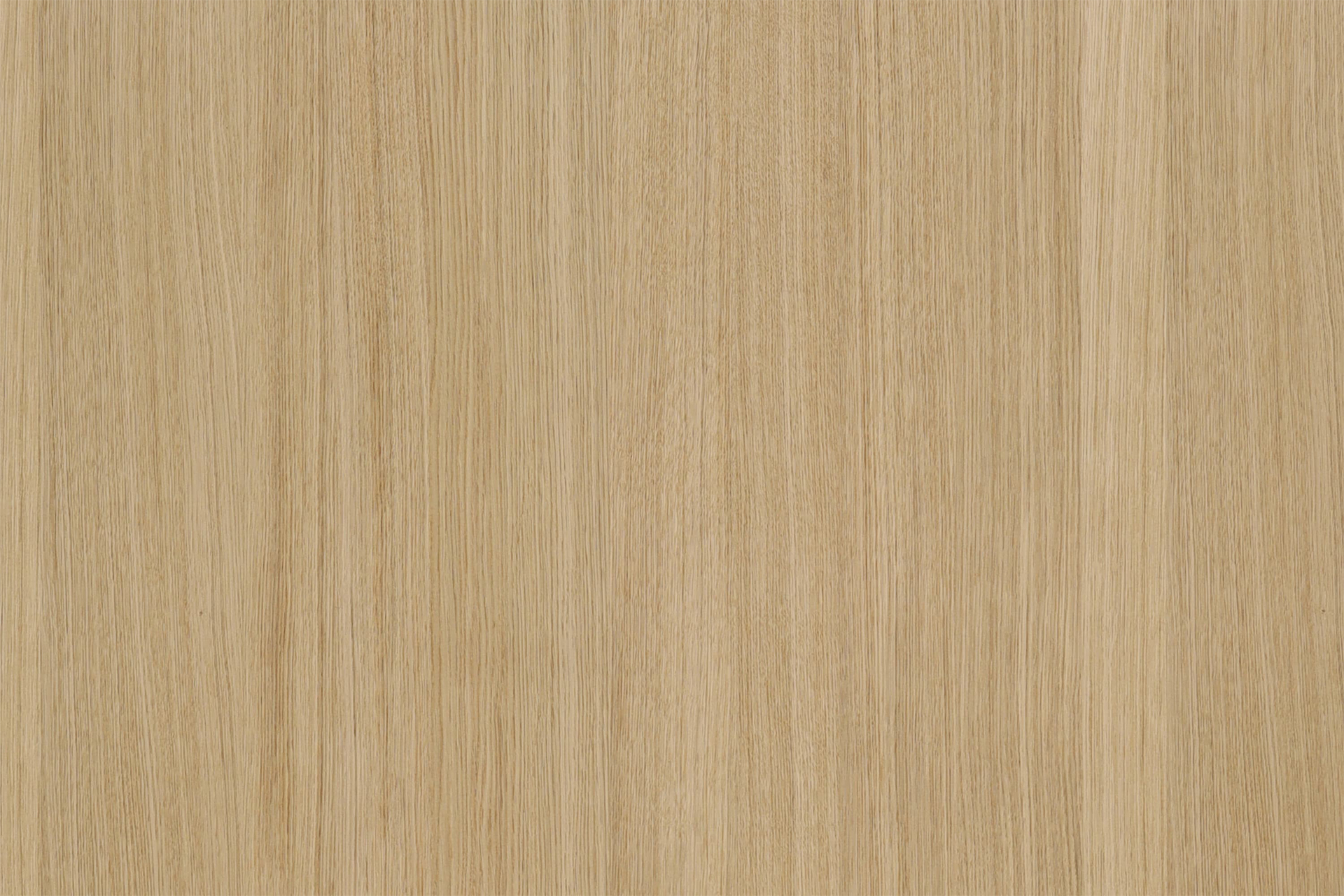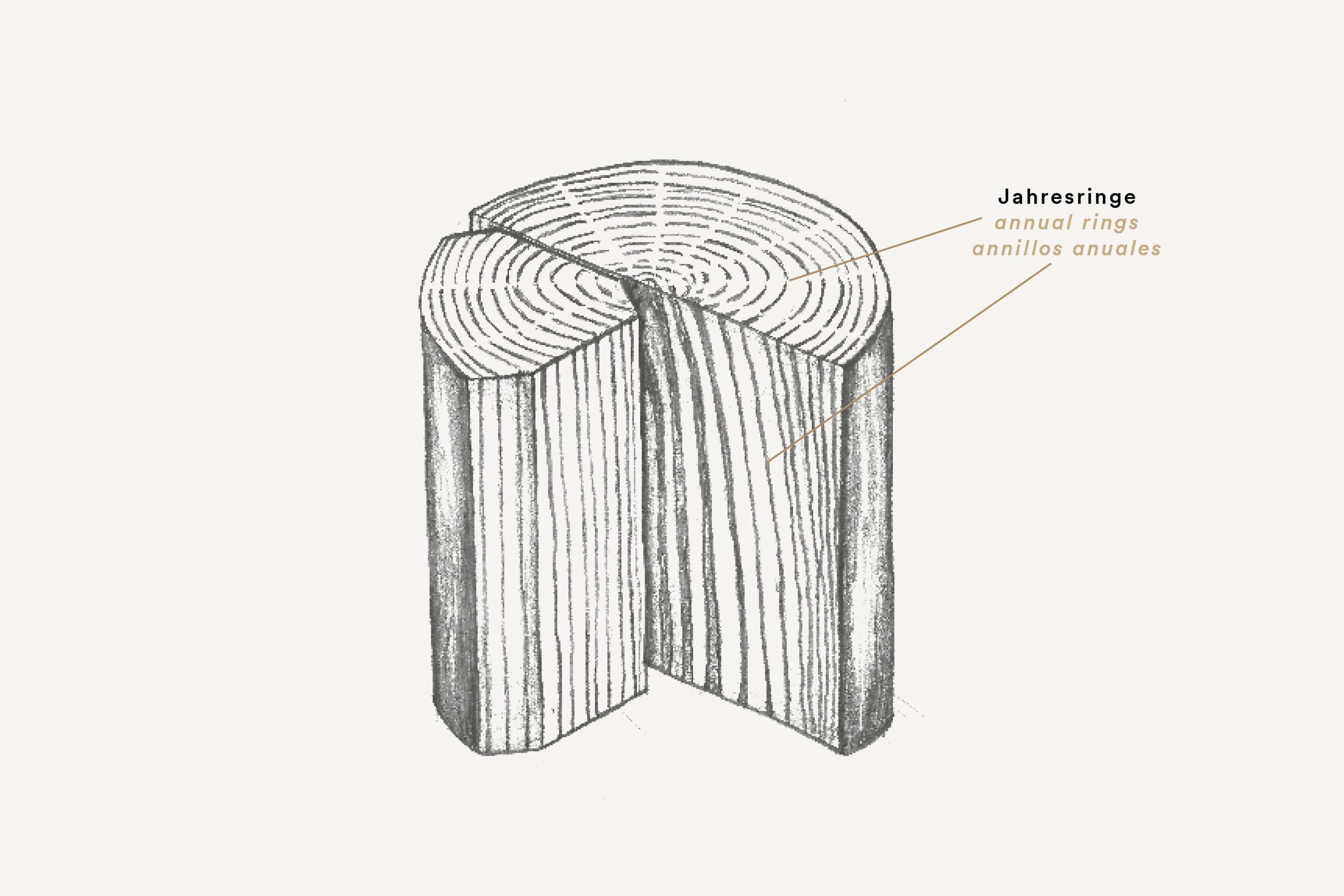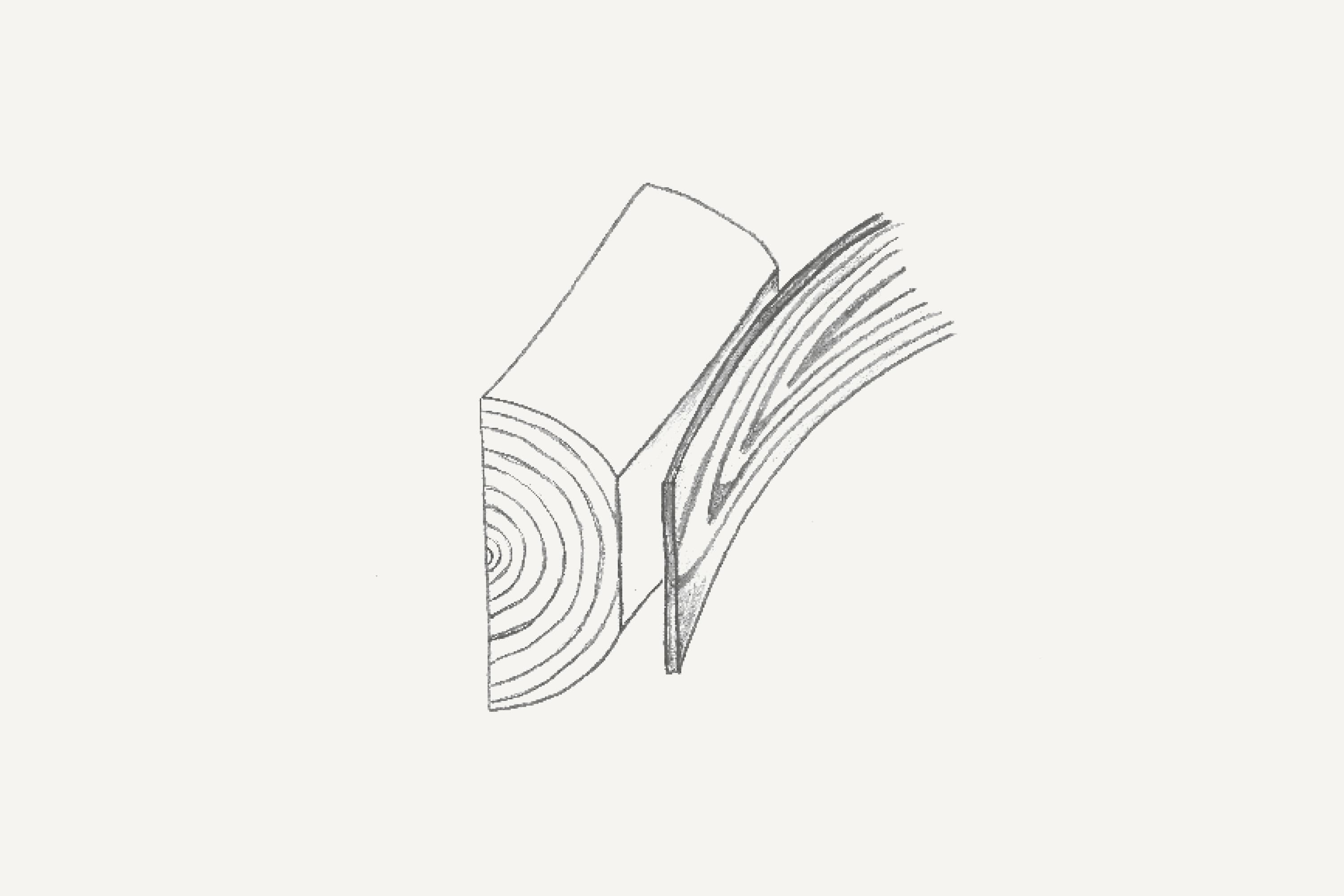

The reason for the varied play of light and dark owes to the annual rings of the tree, which are shown in different effects depending on the cut. Everyone knows the image of a tree slice.

As a reminder: one ring stands for one year of the tree's life. Each ring consists of light (fast growing) early wood and dark (slow growing) late wood. The only difference is that to produce floors and furniture, the tree trunk is sawn along its full length rather than slices. However, it is not so simple as cutting long, thin boards (which would also be structurally unsound). To achieve the desired wood pattern, there are specific techniques for cutting a log. They allow efficient processing of the tree and create different images in the wood.


To create straight-line stripes, the trunk is quartered. Then, each quarter is sawn radially so that the annual rings are cut at right angles. This grain is called rift.


When the tree is cut parallel to the axis (tangentially), the annual rings appear arched or oval. This grain is called cathedral.


The overall picture formed by the annual rings depends on how we join the individual veneers. But that is another topic.


